Our Blog
Cozy Toes: The Principles of Winter Paw Protection
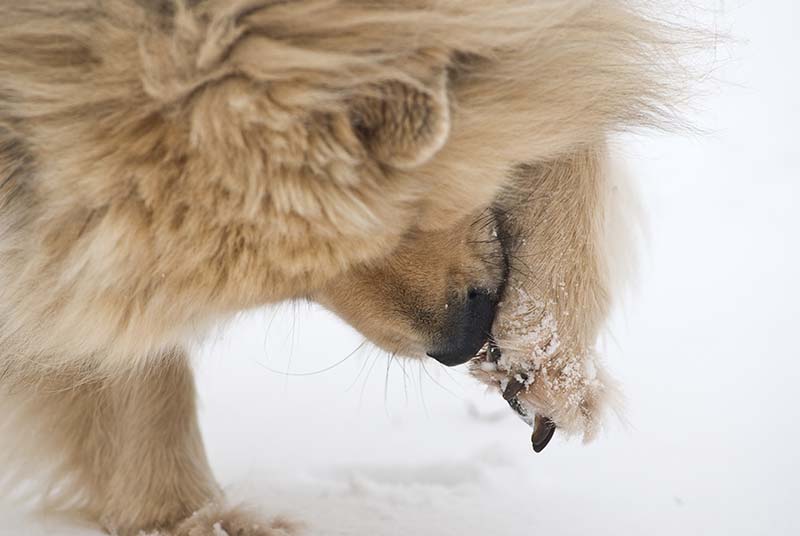
Our pets rely on their paws to transport them everywhere they need to go and in all types of weather, and it is easy to assume that their paws can withstand whatever Mother Nature throws at them. Unfortunately, cracked pads, frostbite, chemical burns, and more present numerous hazards to the well-being of our pet’s paws, especially, this time of year. With this in mind, the team at Lone Tree Veterinary Medical Center would like to walk you through the basics of winter paw protection for your furry loved one!
Adorable Anatomy
Paw pads are some of the cutest parts of any pet, but they also serve many important functions. Pads provide cushioning and shock absorption by protecting the ligaments, tendons, and bones from the impact of walking and running. They also provide insulation from hot and cold surfaces, as well as traction when a pet traverses across varying types of terrain. Paw pads also protect against bacteria, parasites, and other nasty contaminants present on any surface or terrain they come in contact with.
As a pet matures, the surface of the pads will become more tolerant to heat, cold, and rough surfaces. That doesn’t mean, however, that they don’t need some additional protection. Their paws remain vulnerable to the damage caused by extreme cold, ice, and chemical de-icers.
Continue…Thanksgiving Foods: Can Your Pet Eat That?
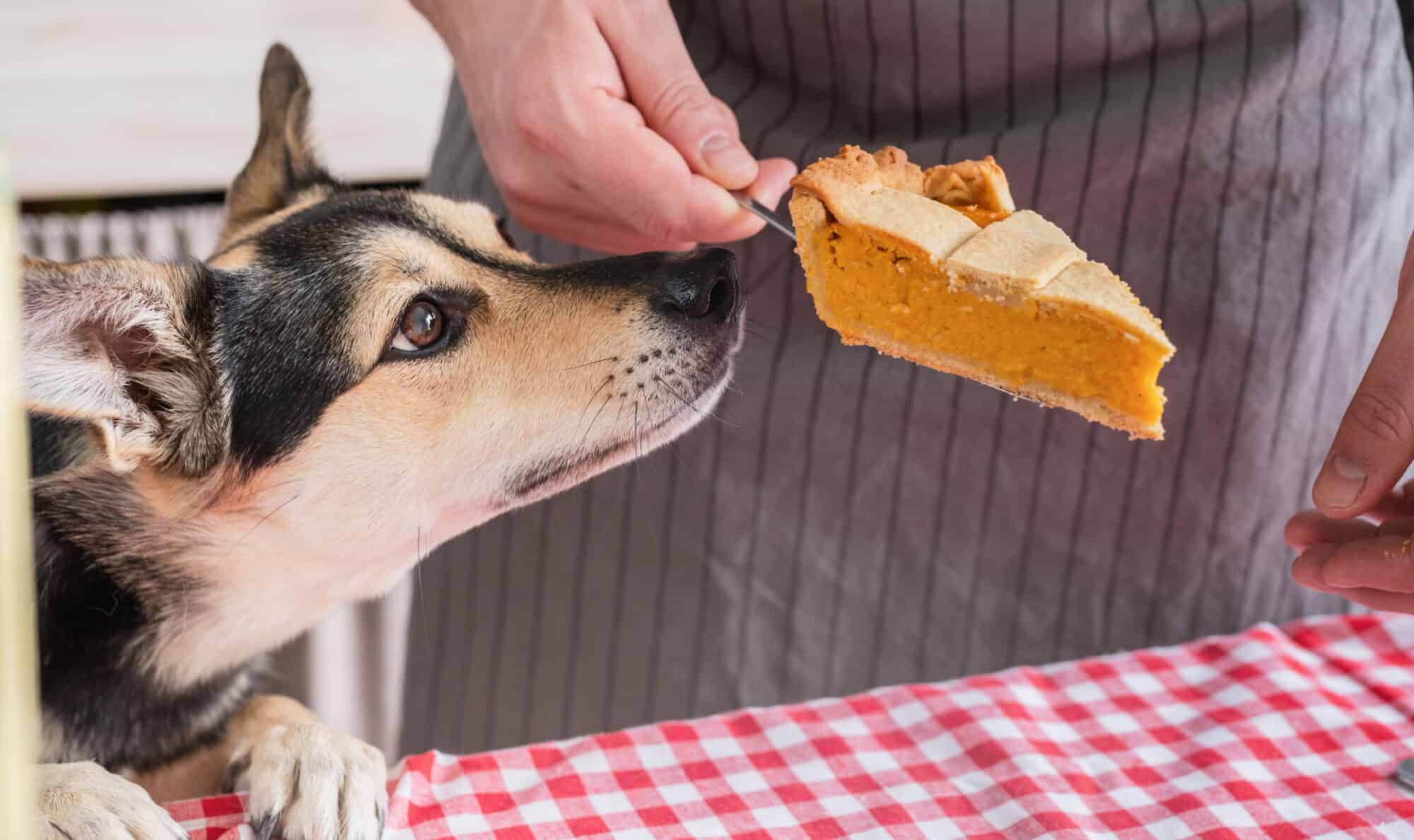
With Thanksgiving almost here, our tables will soon overflow with delicious food. While your pet’s cute face will certainly tempt you into sharing, it’s crucial to remember that many popular human dishes are not safe or healthy for them. Knowing what they can and can’t eat—like whether dogs can eat stuffing or if cats can have pumpkin—will help you resist the urge.
To ensure a safe celebration for everyone this holiday, and to avoid a trip to the emergency room, we’ve compiled a clear list of Thanksgiving foods to skip and the healthy options you can safely share with your pet.
Thanksgiving Foods To Avoid
The items below are Thanksgiving foods that will cause more harm than good for your cats and dogs. To keep them healthy, ensure these dishes are inaccessible. And remember: You aren’t the only one feeding your pet! Please inform your family and dinner guests about these dangerous or toxic foods to prevent well-meaning but risky table scraps.
Turkey Bones
Never share leftover bones. Bones can easily cause choking or splinter and puncture the intestines, necessitating emergency veterinary care.
Fatty Foods
Fatty foods such as turkey skin, ham, bacon, dark meat, rich sauces and mashed potatoes must be avoided. They are too rich and can trigger painful digestive issues like pancreatitis in your pet.
Onions, Garlic, Shallots, Leeks & Chives
Onions, garlic, shallots, leeks and chives are highly toxic to both dogs and cats. Ingestion can cause immediate damage to your pet’s red blood cells. While small amounts might not show immediate symptoms, large doses or chronic exposure can lead to severe, life-threatening anemia.
Unbaked Yeast Dough
Keep all raw dough completely out of reach. If ingested, it creates a dual emergency: The dough can expand dramatically inside your pet’s stomach, causing a dangerous blockage and severe bloating. Simultaneously, the active yeast ferments and produces alcohol, leading to the rapid onset of alcohol poisoning.
Grapes/Raisins
Grapes and raisins are highly toxic to pets, especially dogs. Even a very small amount can trigger potentially fatal and irreversible kidney failure. Always keep fruit salads and baked goods containing these ingredients strictly out of reach.
Macadamia Nuts
Macadamia nuts are highly toxic to dogs. Ingestion can cause painful symptoms, including weakness, tremors, vomiting, and overheating.
Chocolate
Chocolate is an absolute no-go for pets, even during the holidays. It contains the stimulant theobromine, which is poisonous to both dogs and cats. Be aware that the danger level directly relates to the color: darker chocolate (baker’s or dark cocoa) contains higher concentrations of theobromine and is therefore much more dangerous than milk chocolate.
Xylitol
Xylitol is an ingredient that is extremely toxic and potentially fatal to dogs, and it is hidden in an increasing number of household items. Since even small amounts can cause a rapid, dangerous drop in blood sugar and liver failure, you must always check the ingredient label on anything your pet might chew or consume.
To complicate safety, manufacturers often use other names for Xylitol on product labels. Be vigilant and watch out for these aliases:
- Birch sugar
- Birch bark extract
- Birch sap
- Sugar alcohol
Thanksgiving Foods To Share…In Moderation
While the “danger list” is long, the good news is that your pet doesn’t have to miss out entirely! In fact, there are still several foods your dog or cat can enjoy this Thanksgiving (in moderation). Here are some examples:
Turkey Meat
Plain, cooked turkey meat is safe for both cats and dogs. Just ensure you only offer a small piece of white meat that is completely unseasoned and free of all fat.
Pure Canned Pumpkin
While the pie filling is unhealthy, plain, canned pumpkin is actually great for pets. A little spoonful of pure pumpkin makes a safe, delicious dessert treat for your dog or cat. Crucial: Ensure it is 100% pure pumpkin, not pie filling.
Plain Sweet Potatoes or Plain Potatoes
Plain, fully cooked potatoes and sweet potatoes are perfectly safe to share with your cat or dog in small amounts this Thanksgiving. Just ensure they are free of butter, cream, seasoning, or garlic/onions!
Plain Green Beans
Plain, cooked green beans are great, healthy treats you can safely share with your dog or cat. However, you must avoid the green bean casserole. Set aside a small serving of cooked, unseasoned green beans before you start assembling the casserole.
Plain Carrots
Just like sweet potatoes, carrots are a powerful, healthy snack for your pet! They are loaded with beta-carotene, vitamins, fiber, and are an excellent source of antioxidants. You can serve them raw for a satisfying crunch, or offer them cooked—just make sure they are completely unseasoned.
What to Do If Your Pet Eats a Toxin
If you suspect your dog or cat has consumed something toxic this Thanksgiving, contact your veterinarian immediately—do not wait! Calling your vet or a pet poison control hotline immediately allows professionals to determine the correct treatment. Some toxins require induced vomiting; others need specific emergency care. The outcome often depends on how fast you act, so do not delay.
We’re Here For You
Lone Tree Veterinary Medical Center provides year-round comprehensive care to protect your pet’s health and safety, no matter the season. Contact us today.
Keeping Your Dog Calm at Vet Visits
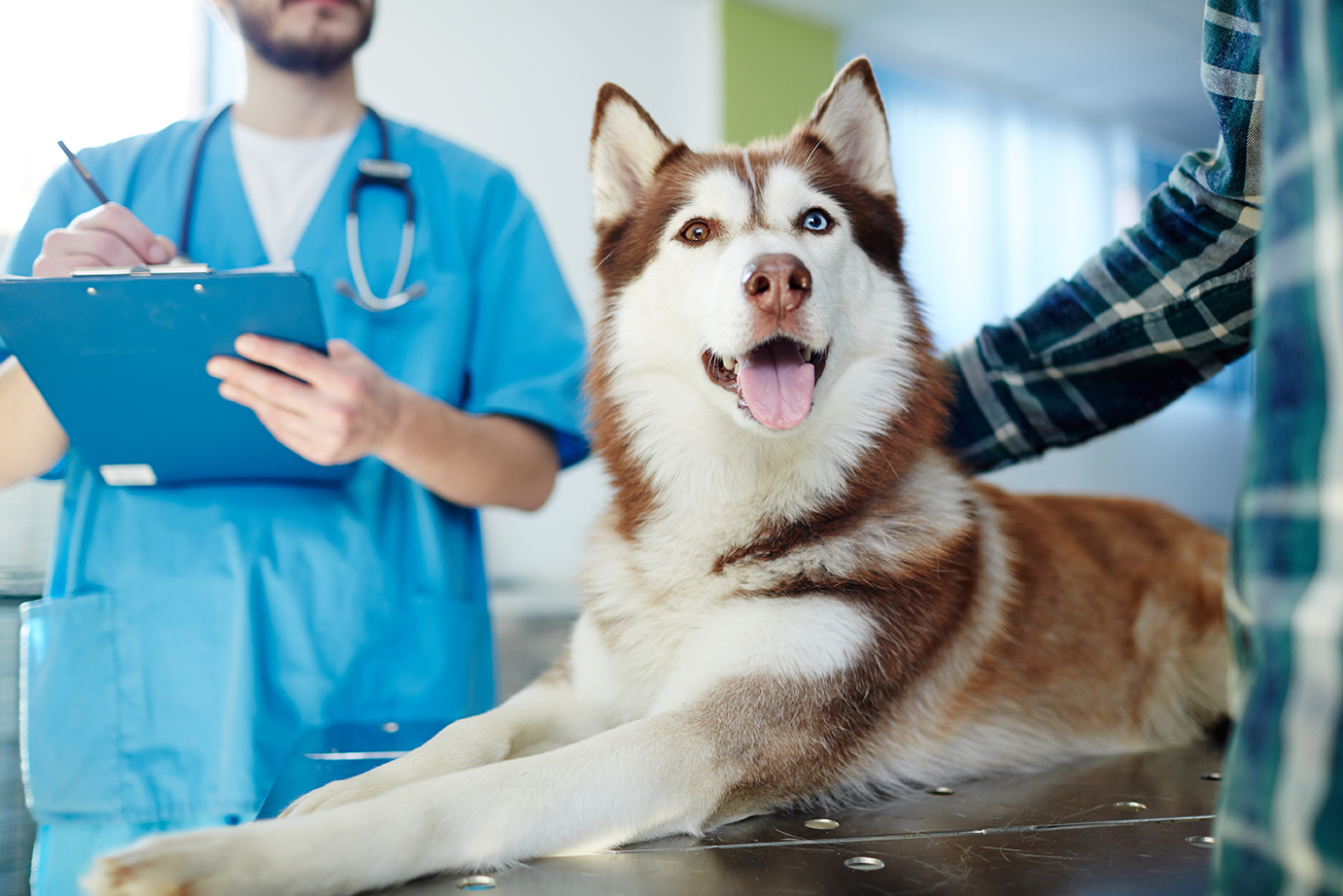
Keeping your dog calm during vet visits doesn’t have to be stressful. In fact, there are several steps you can take to make your next trip a little easier for both you and your pet.
Continue…The Dirty Truth About Your Pet’s Bed

Is Your Pet’s Bed Overdue for a Cleaning?
Sharing our home with pets brings many joys. But along with that joy comes dirt, hair and parasites. While vacuuming up fur may be a daily habit, it’s easy to overlook your pet’s bed and let it go weeks without a wash. These cozy sleeping spots are prime breeding ground for hair, fleas, and unwelcome germs.
Pet Beds Same As Bed Sheets
Think of it this way: your pet’s bed deserves the same washing routine as your own sheets. If you’re ready to banish the funk, eliminate germs, and keep your pets healthy, you need to know the facts. Here is what every pet parent needs to know about keeping those pet beds truly clean.
Why You Need To Clean Your Pet’s Bed
It’s easy to overlook that cozy pet bed, but think of it as a silent collector. Day after day, it gathers more than just fur and dirt—it becomes a hotspot for some seriously unwelcome guests:
- Allergens: Your pet’s bed traps dust mites, pollen, and dander, triggering miserable allergies for both your pet and your family.
- Parasites: Washing is your best defense! Fleas, ticks, and mites can hide and thrive in bedding. But regular washing helps break their life cycle and keeps pests at bay.
- Odors: Let’s banish the funk! Frequent washing prevents that noticeable “doggy smell” or strong cat musk from taking over your living room.
Choosing A Pet Bed
Not all pet beds are created equal. A quality bed is a smart investment that does more than just offer comfort—it actively works to keep your home cleaner. By choosing the right materials, you can significantly reduce odors, allergens, and bacteria.
Shopping for a new one? Keep these essential features in mind:
- Removable covers: Beds with removable covers make cleaning a breeze. You can toss the cover into the wash without dealing with bulky padding.
- Machine-washable materials: Got a washing machine that can handle bulky items? Look for beds made of fabrics and fillers that can tolerate machine washing and drying. This helps ensure a deep clean.
- Waterproof liners: A waterproof layer between the cover and the stuffing keeps potty accidents, drool, or muddy paws from soaking into the core of the bed.
How Often Should You Clean Your Pet’s Bed?
How often should you wash that pet bed? While there’s no single perfect answer, follow this general rule of thumb:
- Dogs: Once a week, especially for pups who spend a lot of time outside or seem to collect odors quickly.
- Cats: You can usually stretch this to every two weeks, thanks to their meticulous self-grooming habits.
- Wash More Often If: Your pet suffers from allergies, is a heavy shedder, or if you’re dealing with a recent flea/pest problem.
Pro Tip: Always check the washing instructions on the tag! And don’t forget to vacuum the area around the bed to keep stray fur and dust under control.
Fresh Beds Equal Happy Home
Your pet deserves a clean, cozy haven—not a breeding ground for smells, parasites, or allergens. The solution is simple: regular cleaning and choosing a bed made with waterproof, machine-washable materials. This combination makes all the difference for a healthier, happier home.
Got Pet Health Questions? Contact Us.
Your pet’s comfort and health are our top priority. If you need expert advice on managing allergies, preventing parasites, or addressing other health concerns related to your pet’s environment, the team at Lone Tree Veterinary Medical Center is standing by. Call us directly at (303)708-8050.
Halloween Pet Safety Tips

Halloween is a highlight of the year for many of us, with adventurous costumes, spooky decorations, and of course, tons of candy. But for pets, Halloween can be a confusing and even scary time.
From the constant ringing of the doorbell to people appearing in strange outfits—not to mention the tempting treats all around—it’s easy for furry family members to get overwhelmed.
Whether your pet loves the chaos or hides under the bed, these Halloween safety tips from Lone Tree Veterinary Medical Center will help them stay safe and stress-free.
Candy and Chocolate
Halloween is synonymous with candy, but for pet owners, those bowls of treats pose serious risks. While delicious for us, it’s crucial to understand why all that sugar and chocolate can be dangerous for our cats and dogs.
Sugar-Free Candies
The biggest danger in that Halloween candy bowl is often the sugar-free kind! Many sugar-free candies and gums contain xylitol. Xylitol is an artificial sweetener that is extremely toxic and potentially fatal to dogs and cats, even in small amounts.
Chocolate
All chocolate is toxic to dogs and cats, but dark and baking chocolate pose the biggest threat. If you suspect or know that your dog or cat has ingested any amount of chocolate, you need to act fast and contact your veterinarian as soon as possible.
Preventing a candy catastrophe is surprisingly simple, but it requires everyone in the house to be on board:
- Elevate and Secure: Keep all candy in sealed containers or bowls placed high up and far out of your pet’s reach. A closed pantry or high shelf is much safer than a coffee table or kitchen counter.
- The Treat Bag Rule: Remind children (and guests!) not to leave their trick-or-treat bags sitting on the floor. We all know how quickly a curious cat or dog can find and empty a bag of tempting snacks!
Pet-Friendly Snacks
Have alternatives to Halloween candy such as:
- Raw carrot sticks
- Small slices of apple (be sure to remove all seeds and cores)
- Their favorite store-bought doggy biscuits or kitty treats
Think Twice About Halloween Costumes
We all love cute Halloween costumes, and few things are more adorable than seeing our pets dressed up as hot dogs, cupcakes, or superheroes. But not every pet enjoys dressing up. If your pet seems nervous or uncomfortable in their costume, it’s totally okay to skip the outfit. A festive collar or bandana works just as well as a complicated getup.
If your pet does like wearing a costume, make sure it fits well and doesn’t block their vision, breathing, or movement. Avoid any costumes with small parts your dog or cat could chew off. And never leave your pet unsupervised while they’re in costume. Wardrobe accidents can happen fast.
Double-Check Their ID
With all the commotion of Halloween—open doors, trick-or-treaters, and spooky sounds—it’s easy for pets to slip out the door unnoticed. That’s why pet ID is so important this time of year.
Make sure your pet is wearing a collar with an up-to-date ID tag. If they’re microchipped, check that your contact info is current in the system—and if they aren’t microchipped, now is the ideal time to get that done. If your pawsome pal happens to sneak out, a good ID can help get them back home safe and sound.
Halloween Doesn’t Have To Be Scary
The key to a successful holiday is thoughtful preparation. By following a few Halloween safety tips, you can ensure your pets stay safe, calm, and stress-free.
Fall Pet Safety Tips
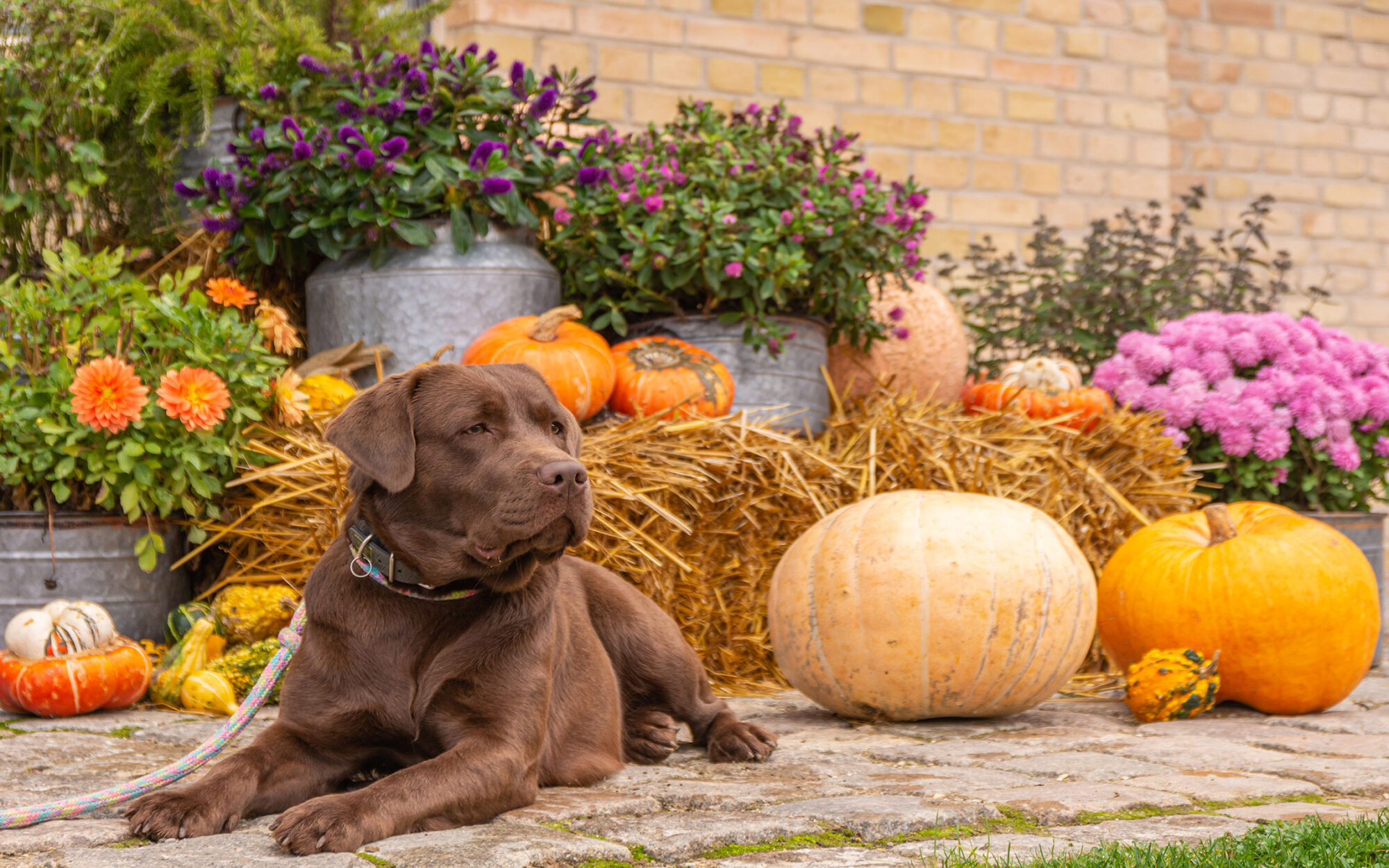
It’s that time of year when the weather turns, the days are shorter, and there is a crisp feeling in the air. Along with the beauty of the season, fall also brings many familiar tasks, including preparing our yards for winter, cleaning the garage, and holiday decorating. Learn how to keep your furry friends safe and healthy during the fall season with these essential tips for fall pet safety.
Continue…The Ins and Outs of a Sedated Grooming
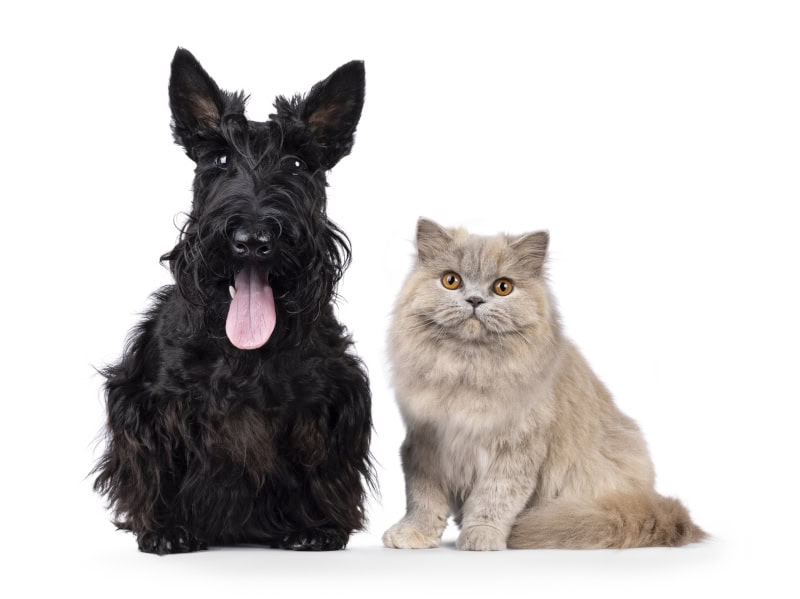
What Is Sedated Grooming?
Sedated grooming involves administering mild sedation to ensure a smooth and stress-free grooming experience for both pets and groomers. Most pets can be professionally groomed without sedation. However, there are some who require this procedure.
Candidates for Sedated Grooming
Candidates for sedated grooming include pets that struggle with aggression, easily stressed and those who struggle with physical pain due to heavy matting.
Continue…Hiking the Trails Safely with Your Dog

Colorado is full of majestic mountains and scenic trails that are hard to resist, especially, when
sharing them with your canine hiking companion. At Lone Tree Veterinary Medical Center, we believe that hiking the trails safely with your dog involves proper training and preparation.
To ensure a great experience, you need to get your dog ready for different terrains, weather conditions—from heat and cold to rain and snow—and changing elevations. Keep reading for tips on staying safe and avoiding common mistakes that could get you into trouble.
Continue…Canine Massage Therapy – Helping Dogs Feel Better
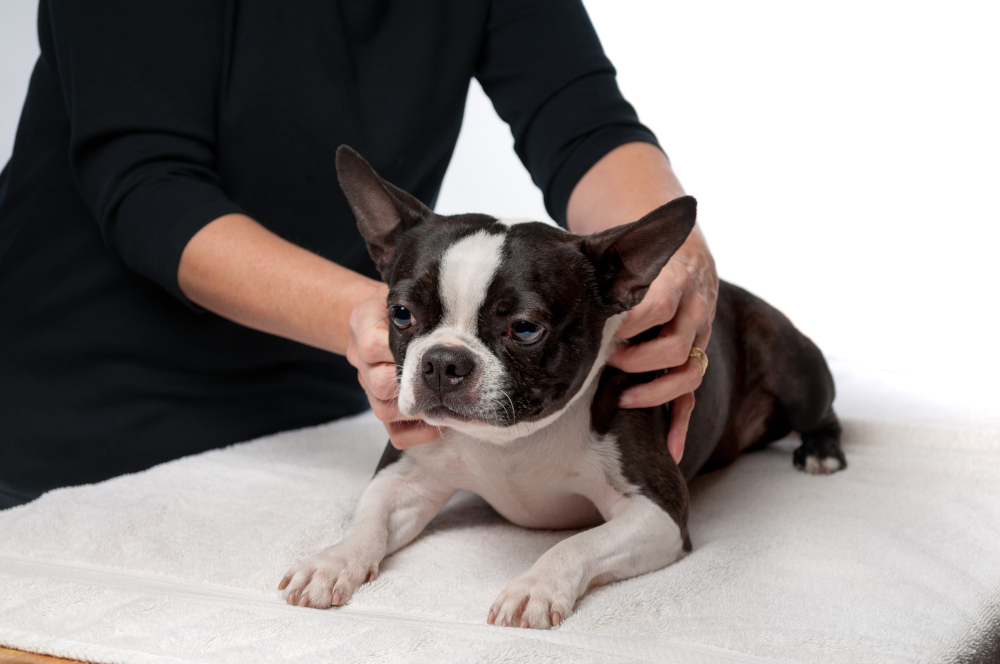
If you’ve ever experienced a therapeutic massage, you know how good it can make you feel. Whether it’s for relaxation or for the overall healing effects, a therapeutic massage can do wonders for both the body and the mind. Dogs can experience these same benefits with canine massage therapy, a natural approach to health and well-being that can leave our dogs feeling great.
What is Canine Therapeutic Massage?
Often referred to as therapeutic touch, canine therapeutic massage utilizes a variety of techniques to manipulate the muscles and surrounding soft tissues to ease pain, soreness and stiffness. It also assists in healing. By applying various hand, finger, and forearm pressures on areas of the body, along with other actions such as kneading, tapping, circular motions and cupping, a canine massage therapist is able to ease muscle tightness, relieve stress and pain around joints, stimulate blood and lymphatic flow, and provide relaxation – all of which can improve a dog’s mobility, health, and sense of well-being.
History of Massage on Animals
Interestingly, the practice of massage on animals is not a modern concept. Historical evidence indicates that ancient cultures were aware of the benefits of massage. It was used to help the animals they relied upon for survival, including their domesticated dogs. The various forms of therapeutic massage seen today still utilize many of those early techniques.
In the mid-1970s, equine circles embraced therapeutic massage after it was used it on an older horse to help restore its mobility. The horse’s improvement was so dramatic that the use of massage became well-accepted at equestrian events and in professional horse racing. Today, therapeutic massage plays a predominant role. Treating a variety of soft tissue injuries in horses and improving their athletic performance.
A Natural Alternative for Dogs
Canine massage therapy has been a common fixture at dog shows and dog sporting competitions at both state and national levels for many years.
With the growing interest in natural alternatives to prescription medications for managing chronic conditions such as arthritis and anxiety, as well as recovery from injury or illness, therapeutic massage provides a non-invasive option for any dog –athletic or not – to help them to live more comfortably.
The Many Benefits of Canine Massage
Therapeutic massage for our canine companions offers many unique benefits. These benefits can make a big difference in their quality of life. They include the following:
- Eases muscle tightness
- Increases range of motion
- Balances muscle tone
- Enhances mobility
- Helps recovery from illness
- Promotes healing after injury or surgery
- Reduces stress
- Strengthens the immune system
- Improves mental well-being
- Helps anxious dogs to relax
- Can produce quick results
- Useful for dogs that resist handling
How Is Canine Massage Performed?
Typically, a canine massage begins with the dog in a seated position. While closely monitoring how the dog is responding to being touched, the therapist may start by gently massaging small areas along the spine. Areas that feel tight will receive extra attention. As the massage progresses and the dog becomes more relaxed, it is not unusual for a dog to voluntarily lie down. With the dog lying on its side, the therapist may start working on the shoulder, hip and leg areas.
If there is a specific trouble spot the therapist knows about ahead of time, this will also be addressed once that area is easily accessible and the dog is receptive to being touched there. Ideally, the therapist will be able to work the dog’s body on both sides. However, the progression of the massage will depend largely on the dog’s response throughout the entire process.
In most cases, once dogs experience a therapeutic massage and know that it tends to feel good, they relax more easily during the next massage. This allows the therapist to focus on specific problem areas or work areas more deeply. An experienced therapist will be able to assess how receptive a dog is and adjust the massage accordingly.
The Gift of Feeling Better
At Lone Tree Veterinary Medical Center, dogs can experience the wonderful gift of canine massage therapy. Our certified and licensed canine massage therapist with over six years of experience with dogs of all ages and breeds.
Massages are 30 minutes long and available on Wednesdays by appointment. Your dog’s massage will be customized to its specific needs. You can be present with your dog during the entire massage appointment.
Book Your Dog’s Appointment
If you want a massage for your dog to relieve pain, ease soreness, promote relaxation, or reduce anxiety while boarding with us, we can help. Give us at 303-708-8050 and we’ll schedule your dog’s session. We love making your special friends feel better!
Pet Safe Valentine’s Day

A Pet-Safe Valentine’s Day is simpler than you might think. To keep your pet safe and out of the emergency room, we’ve put together essential Valentine’s Day pet safety tips.
Flower Arrangements
Flowers and Valentine’s Day go hand in hand. Selecting the perfect flower arrangement is already challenging, but it becomes even trickier when considering which flowers could be harmful to your pets.
Continue…


